Nuremberg’s Old Town completely swept me off my feet. The winding cobblestone streets, half-timbered houses, and that wild mix of history and culture just pulled me in.
As I wandered beneath the looming shadows of Nuremberg’s Imperial Castle, I started picturing the kings and emperors who once gazed out from its towers. They ruled over one of the most important cities in the Holy Roman Empire. Exploring the castle and the Old Town gave me a real sense of Nuremberg’s strength, artistic spirit, and that unforgettable medieval might.
I followed my own little itinerary, starting at the sturdy city walls and old gates. Then I found myself in quiet courtyards, lively market squares, and even the legendary house where Albrecht Dürer lived and worked.
Every corner revealed something new. Sometimes it was the castle’s sweeping views, other times it was secret passageways hidden below.
Walking these historic streets, I felt both inspired by Nuremberg’s past and energized by its present. This city is perfect for anyone who loves art, history, and a dash of old-world wonder.

Medieval Majesty: Exploring Nuremberg’s Imperial Castle
The Imperial Castle of Nuremberg, or Kaiserburg, towers above the city and really dominates the skyline. When I explored its towers, walls, and museum, I felt like I’d stepped right into the age of emperors and knights.
Sinwell Tower, especially, offers city views I still can’t get out of my head.
Kaiserburg’s Towers and Walls
The first thing that struck me was just how massive and thick the castle walls are. Walking under those stone arches and along the ramparts, the stories of sieges and emperors suddenly felt real.
Kaiserburg isn’t just one building. It’s a cluster of tough towers, gateways, and fortified walls that once protected the city’s heart.
The Sinwell Tower stands out, round and tall above everything. At its base, I saw stones battered by centuries of storms and battles.
The city walls stretch out, dividing old from new. Even now, they help define Nuremberg’s character.
In the courtyard, there’s the Tiefer Brunnen—a deep well that’s one of the deepest medieval wells I’ve ever seen. It supplied water during sieges, and sometimes guides drop a coin in so you can hear how far it falls.
As I wandered these grounds, I could almost hear ancient boots echoing on the stone. Every turn along the walls or up a narrow staircase brought new surprises—tiny archer windows, doors barely wide enough for one person, thick doors that once kept enemies out.
- Features to explore:
- Defensive towers (Sinwell Tower and others)
- Gates and fortified walls
- The deep well
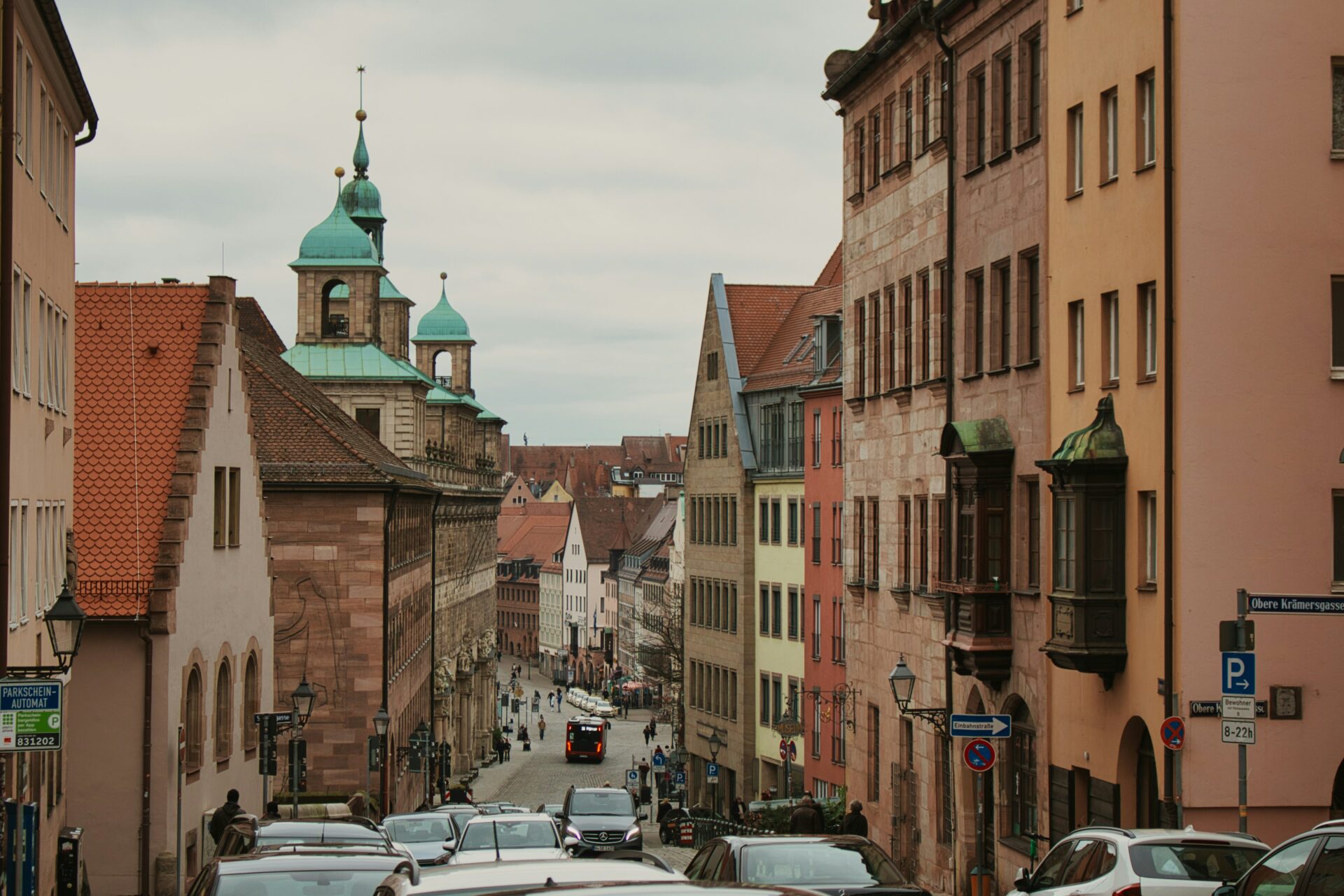
Imperial Castle Museum Discoveries
Inside the castle complex, the Imperial Castle Museum pulled me in with artifacts that tell the story of the Holy Roman Empire and Nuremberg. I saw weapons, suits of armor, and items used by emperors and city leaders.
One display case held ancient keys and seals. Another room showed paintings and models of the castle, tracing how it grew and changed over time.
What really stuck with me were the restored imperial rooms—wooden beams, stone floors, and original furnishings. I almost felt like I’d crashed a medieval strategy meeting, surrounded by relics that once shaped European history.
This museum is perfect for anyone who likes to learn by seeing and touching, not just reading. There’s info in English and German, so it’s easy to follow along.
Families will find some hands-on displays, too. Kids can try on chainmail or heft a knight’s helmet.
- Highlights:
- Medieval weapons and armor
- Period furniture and imperial symbols
- Engaging displays with historical context
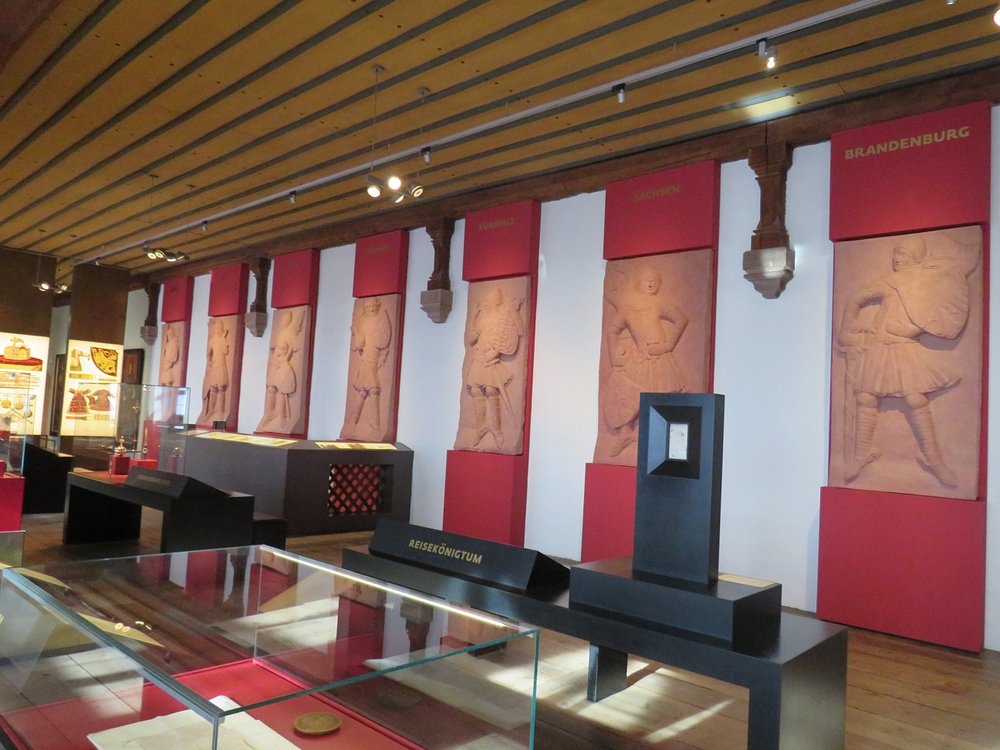
Sinwell Tower’s Panoramic Views
Climbing Sinwell Tower was the highlight of my visit. The stairs are narrow and winding, so it’s a bit of a workout, but the view at the top is so worth it.
From up there, I looked out over the red rooftops, the old town’s geometric streets, Gothic church spires, and the sturdy city walls wrapping around the heart of Nuremberg.
On a clear day, the countryside stretches for miles. I could spot Albrecht Dürer’s house, the bustling marketplace, and even some of the city’s famous bridges.
Standing up there, it’s obvious why medieval emperors picked this spot. It’s defensible, impressive, and honestly, breathtaking.
If you’re into photography, definitely bring your camera or phone. Early morning or late afternoon offers the best light and fewer crowds—photos just look more magical. The tower stays open year-round, but it can be cold and windy, so a jacket helps.
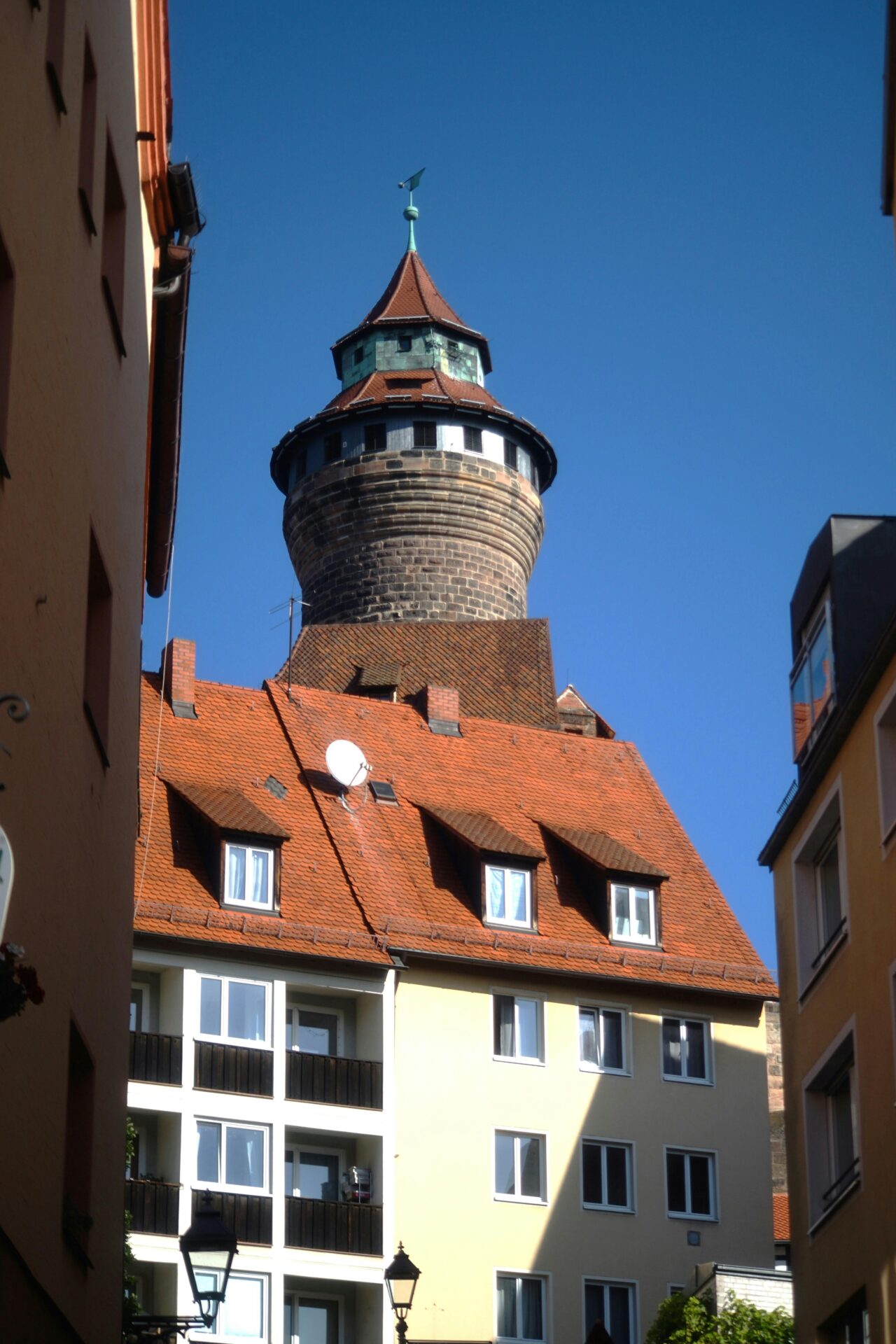
Strolling Through the Old Town—A Tapestry of History and Architecture
Exploring Nuremberg’s Old Town felt like stepping straight into the past. Each turn brought new medieval sights, lively market squares, and narrow cobblestone streets full of stories.
Half-Timbered Houses and Market Squares
Every stroll through the Old Town put me face to face with rows of half-timbered houses. These wooden-framed buildings have a cozy, almost storybook vibe you just don’t find everywhere.
Most have stood here since the Middle Ages, their beams weathered but still charming.
Market squares like the Hauptmarkt always buzz with activity. In winter, the Christkindlesmarkt lights up the square, filling the air with gingerbread and festive excitement.
Year-round, the square pulses with local life—from produce stalls to flower vendors.
I love how these open spaces invite everyone to linger. Whether you’re sampling Franconian sausages at a food stall or just people-watching, you’ll feel the city’s heartbeat.
The blend of medieval buildings and busy crowds is really the soul of Nuremberg’s Old Town.
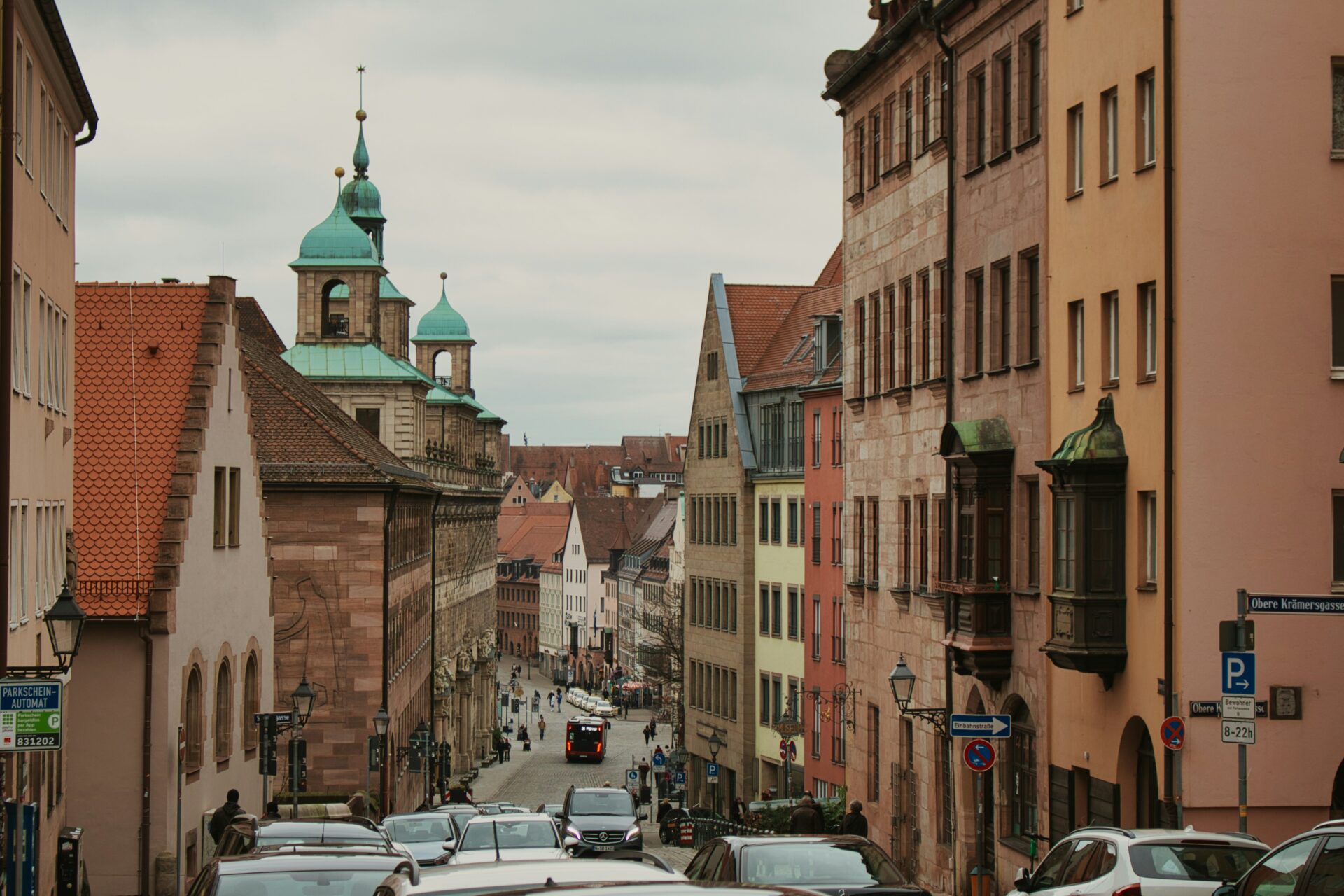
Weißgerbergasse’s Medieval Charm
Weißgerbergasse is hands down my favorite street in Nuremberg. Over 20 colorful medieval houses line the road, making it one of the best-preserved stretches in the city.
Unlike some historic areas that seem frozen in time, this street feels alive. I always stop to admire the pastel façades, each painted a little differently.
Small shops and cafes fit snugly into the ground floors. Locals chat on benches, kids dart between stone doorways, and the uneven cobblestones remind me how many feet have passed this way over the centuries.
Visiting Weißgerbergasse brings the city’s medieval history close. If you want to capture Old Town’s unique spirit, don’t skip this street.

City Gates and Ancient Streets
Nuremberg’s old city walls and gates still stand as proud guardians of its past. I entered through Königstor, one of the grandest gates, and instantly felt the weight of centuries as I walked beneath its arches.
As I wandered the old fortifications, I imagined merchants and watchmen doing the same long ago.
Many of the narrow medieval streets twist between city gates. Along Sebalder Altstadt and Lorenzer Altstadt, old stone roads lead you to landmarks like St. Sebaldus Church and the Imperial Castle.
Every turn revealed little details—carved doorframes, plaques, ancient wells.
These ancient streets are surprisingly easy to explore on foot. The compact layout lets you soak in the atmosphere, admire the architecture, and connect with Nuremberg’s layered history, whether you’re coming from Munich or another Bavarian city.
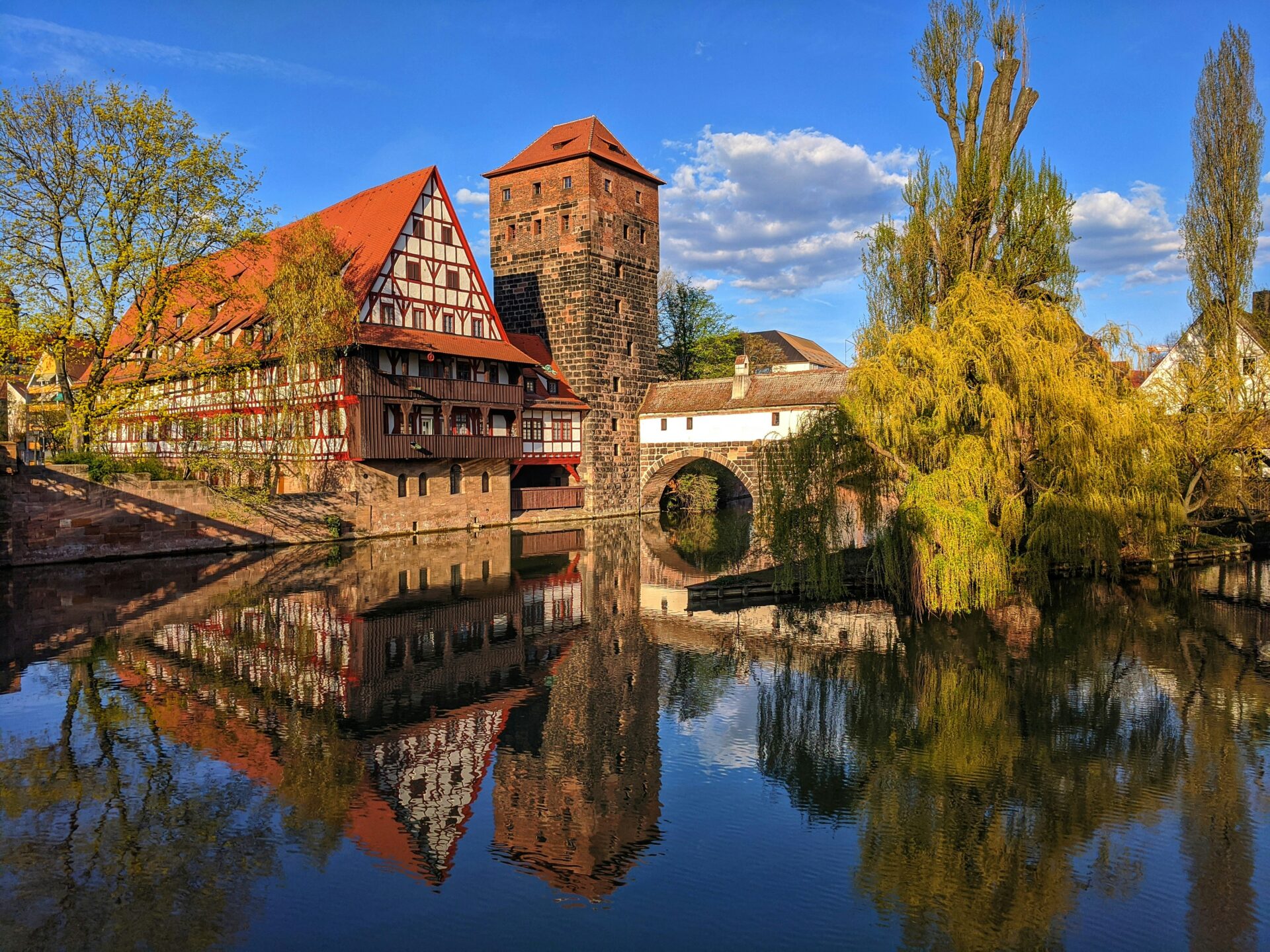
Nuremberg’s Artistic Soul: Following Dürer’s Footsteps
As I wandered Nuremberg’s Old Town, I noticed how history and creativity meet at every corner. I kept discovering treasures, both above and below ground, that offered fresh ways to connect with the city’s legacy of art and resilience.
Touring Albrecht Dürer’s House
The Albrecht-Dürer-Haus stands tall just below the Imperial Castle. Walking inside, I felt like I’d jumped straight into the 16th century.
This half-timbered house, where Dürer lived and worked, is now a detailed museum. The rooms recreate his living spaces—from the kitchen to his studio.
I joined a guided tour with a docent dressed as Dürer’s wife, Agnes. Her stories brought daily life in the artist’s time to life.
Seeing original prints and tools used for woodcut illustrations was a real treat. The museum also explores Dürer’s friendships with humanists, and you really get a sense of how Nuremberg became a creative hotspot.
Tips:
- Location: Albrecht-Dürer-Strasse, right in Old Town
- Highlights: Original art, interactive exhibits, and hands-on workshops for visitors
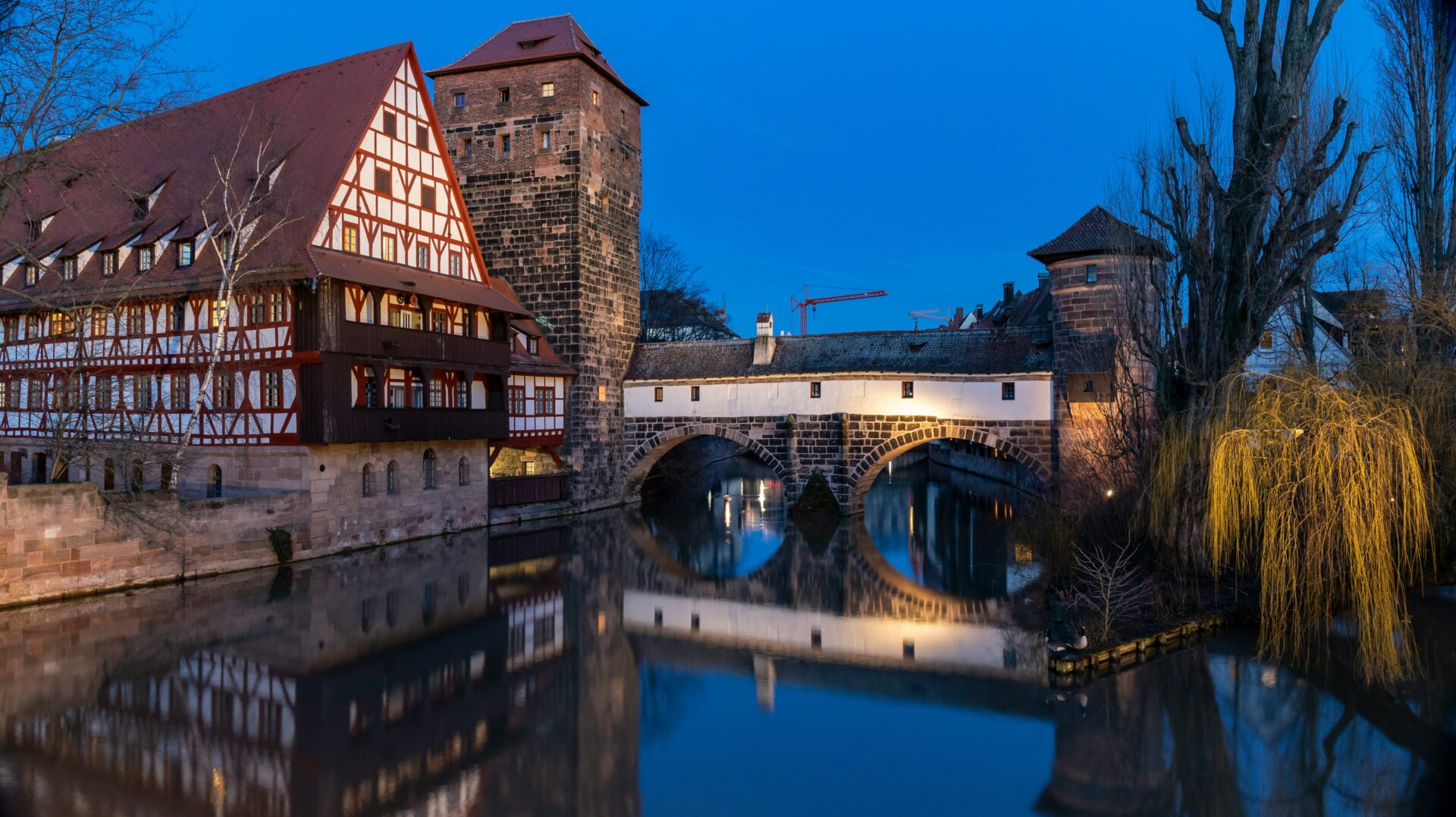
The Kunstbunker Underground Art Vault
Hidden beneath Nuremberg’s streets, the Kunstbunker is an underground vault that protected precious artwork during World War II. Standing in those cool, dim tunnels, I felt the city’s deep commitment to preserving its heritage—especially works by Dürer and other greats.
The guided tour gave me a behind-the-scenes peek at the clever strategies used during wartime. Museums stored their treasures here to keep them safe from bombs and looting.
Exhibits explain how these efforts saved countless cultural artifacts. I still admire those who risked everything to shield their city’s artistic legacy.
Must-See Features:
- Vaulted chambers with display cases of rescued art
- Historical photos showing the emergency evacuation of museums
- Audio guides sharing survivor testimonies
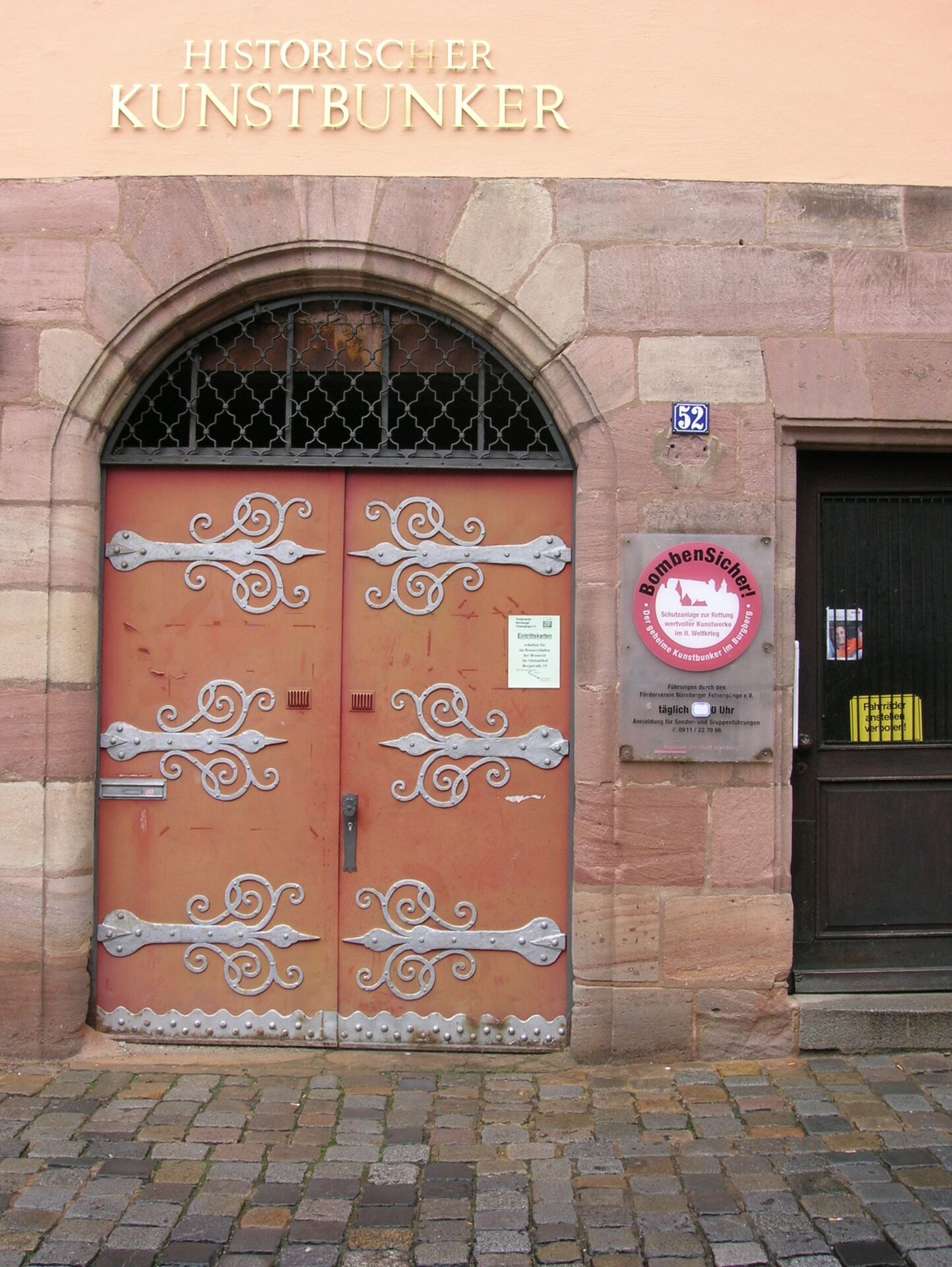
Public Art and Sculptures Across Town
As I wandered, art seemed to pop up on every corner. Sculptures, murals, and carvings are everywhere, woven into daily life.
Some are modern, others reach back to Nuremberg’s medieval tradition and big names like Dürer.
Large bronze statues catch sunlight in the main squares, including tributes to artists and scholars. Playful fountains—like the Ehekarussell (“Marriage Carousel”)—invite laughter and reflection.
Street art sits alongside centuries-old carvings in quiet alleys. Every piece feels like a thread in the city’s historic fabric.
Art Highlights Table:
| Landmark | Style | Location |
|---|---|---|
| Dürer Statue | Renaissance | Albrecht-Dürer-Platz |
| Ehekarussell Fountain | Baroque/Modern | Near White Tower |
| Contemporary Murals | Street Art | Gostenhof District |
From the castle down to the Pegnitz River, I never ran out of visual surprises. Nuremberg’s love for art—old and new—kept me exploring, camera in hand.

Sacred Spaces: Churches and Spiritual Landmarks
Nuremberg’s old town is full of centuries-old churches that still shape its medieval spirit. Each landmark offers a different glimpse into the city’s history, art, and faith.
St. Lawrence Church’s Gothic Grandeur
St. Lawrence Church, or Lorenzkirche, grabbed my attention right away. Its Gothic façade and twin towers reach up to the sky.
Step through the massive doors and the vaulted ceilings soar above, making you feel tiny in the best way. Construction started in the 13th century, so it’s one of Nuremberg’s oldest and most recognizable buildings.
Inside, sunlight streams through stained-glass windows, filling the church with color—especially in the mornings. The grand organ is famous among music lovers and echoes through the nave during concerts and services.
I took a quiet moment to admire the intricate Tabernacle, a late Gothic sculpture that’s just stunning. St. Lawrence played a big role after the Reformation, aligning with the Evangelical Lutheran Church.
Tip: Try to visit during a mid-day concert—the acoustics make the space come alive.
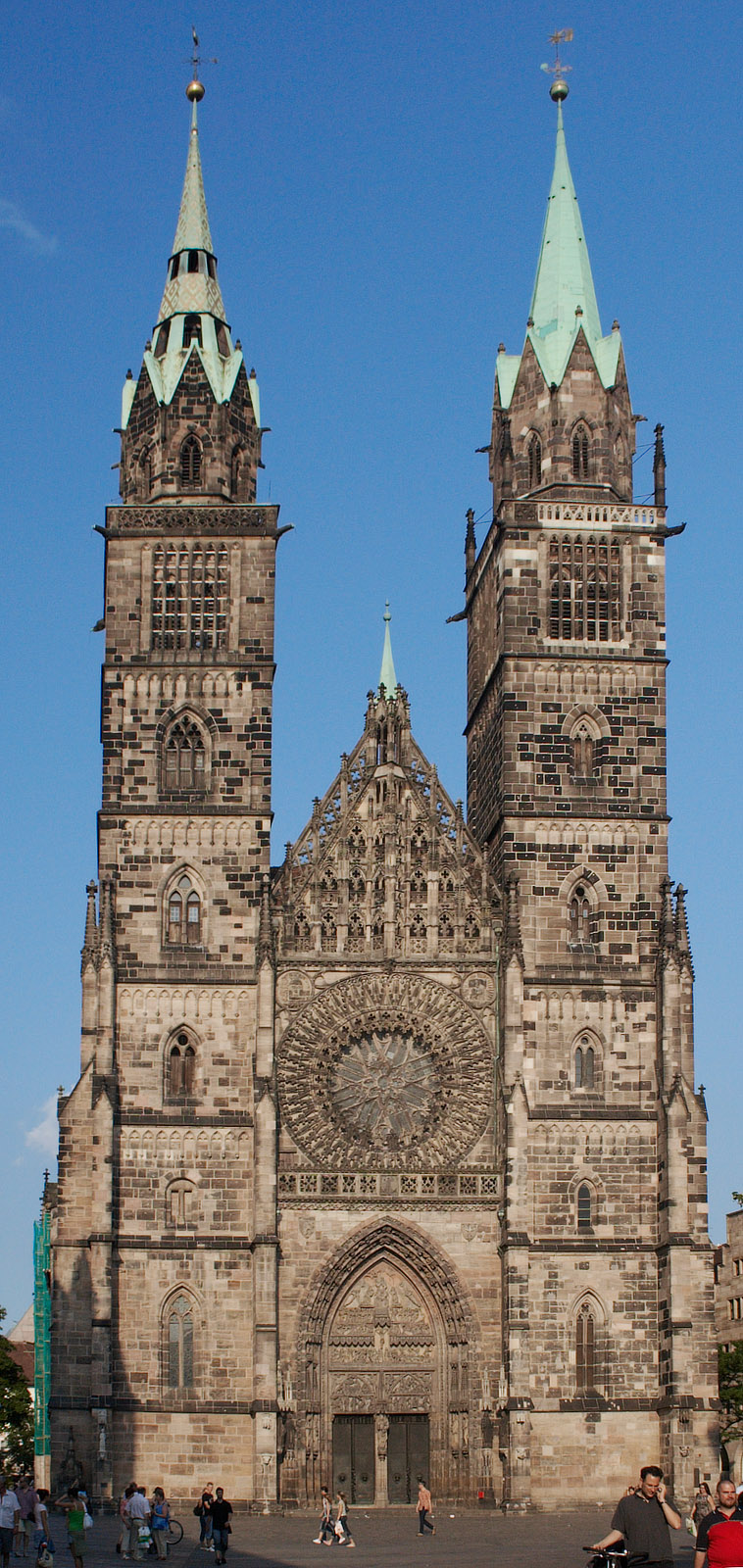
Frauenkirche and the Männleinlaufen
Overlooking the busy Hauptmarkt, the Church of Our Lady—Frauenkirche—impressed me with its ornate brickwork and striking clock. Built in the 14th century on the site of a former synagogue, it’s a key part of Nuremberg’s skyline.
The church is known for its Männleinlaufen, a mechanical clock show at noon. When I watched, little figurines circled the Holy Roman Emperor, reenacting an old imperial tradition.
The inside is a bit more understated than St. Lawrence, but its history and central location make it a true landmark.
Don’t miss: Stand outside at midday for the Männleinlaufen—locals and visitors all gather for this charming, quick show.
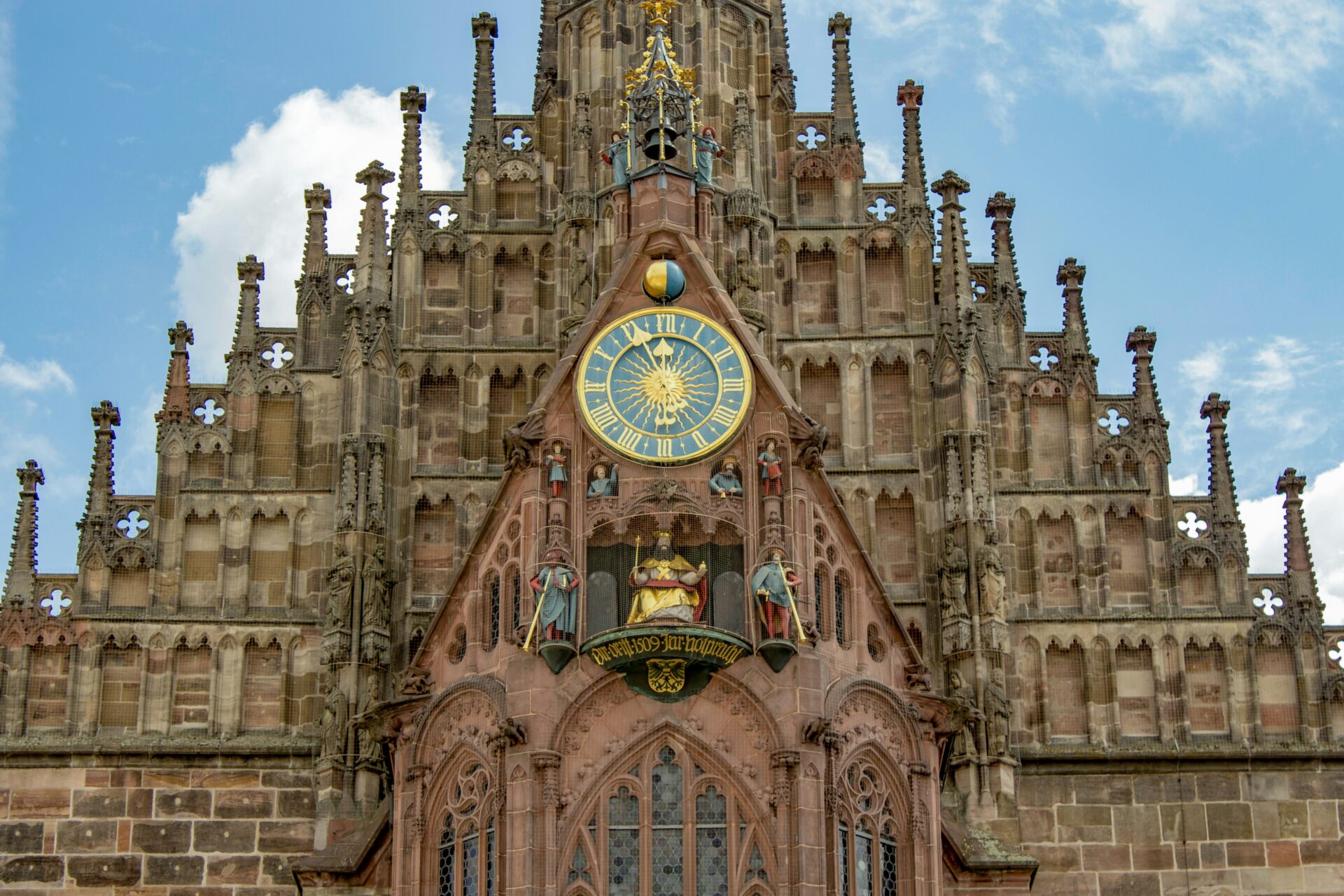
Sebalduskirche’s Medieval Legacy
Sebalduskirche, dedicated to Nuremberg’s patron saint St. Sebald, stands out for its somber Romanesque-Gothic architecture and peaceful atmosphere.
It sits just a short walk from the castle and dates back to the early 1200s, making it the oldest church in Nuremberg.
The bronze tomb of St. Sebald, covered in intricate reliefs and life-size candles, really feels like the church’s spiritual and artistic heart.
As I wandered inside, I noticed the way light shimmered on weathered stones and old stained glass.
Much of the medieval art survived the war, and it still stirs up a sense of reverence.
The twin towers create a striking silhouette against the Nuremberg skyline.
Pro traveler note: Go early in the morning if you want a quiet, reflective moment before the crowds show up.
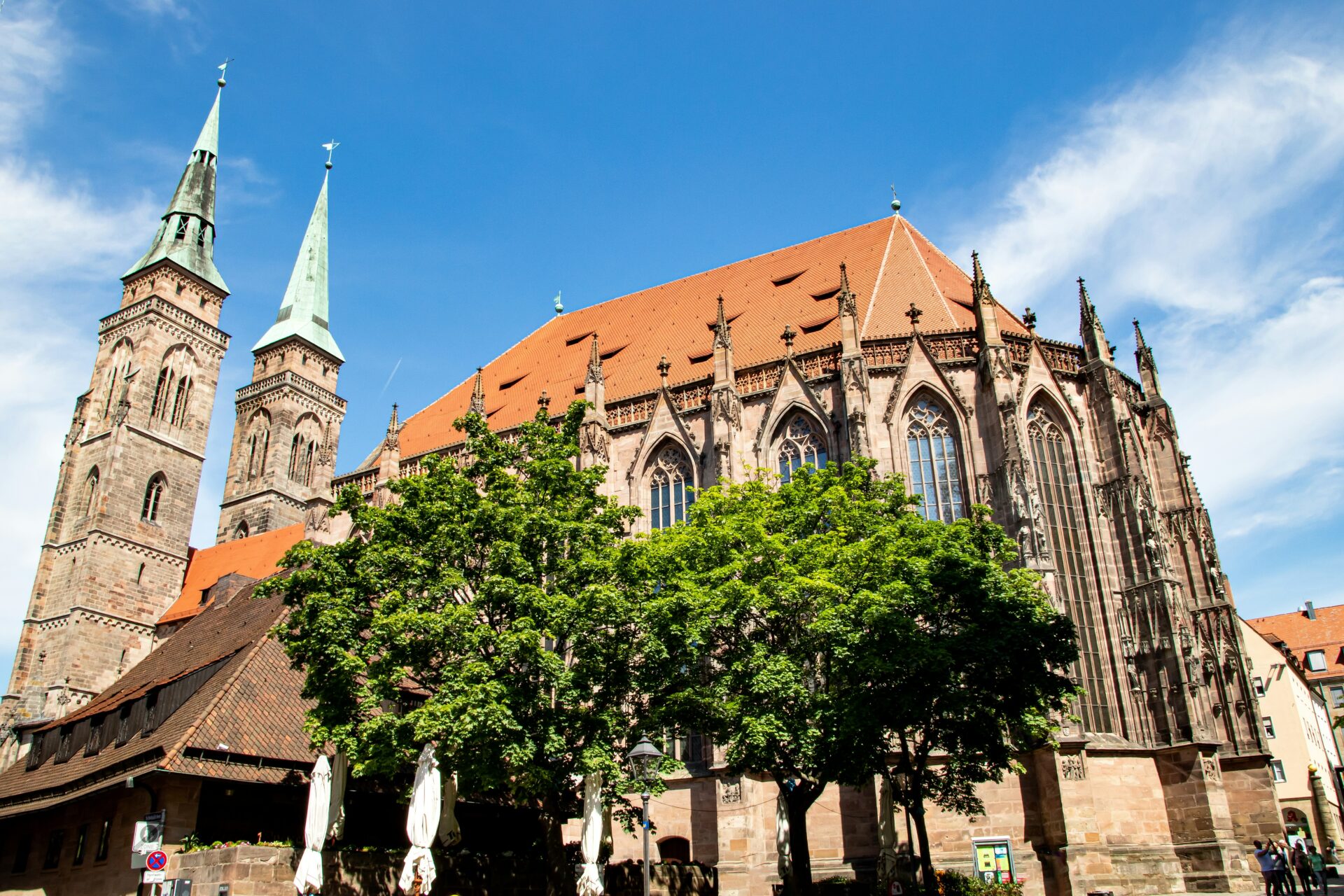
Cultural Encounters and Unique Experiences
Nuremberg’s Old Town buzzes with hands-on craft traditions, mouthwatering food, historic bridges, and riverside calm.
Every corner offers a glimpse into daily life and centuries of culture.
Handwerkerhof: Craftsmen’s Courtyard Vibes
Walking into the Handwerkerhof, I felt like I’d stepped straight into medieval times.
This tiny walled village sits just by the Königstor and brings old-world craft to life.
Cobblestone lanes wind past timbered houses.
I watched blacksmiths hammer iron, glassblowers shape delicate ornaments, and potters spin clay.
Shops show off handmade goods, from wooden toys to Nuremberg’s famous Lebkuchen (gingerbread).
I chatted with local artisans and even tried carving a tiny souvenir myself.
Tables outside cafés make a perfect spot for people-watching.
The vibe is relaxed and friendly, and honestly, it’s a great place for finding meaningful, authentic gifts you just can’t get anywhere else.
| What to Try: | Best For: |
|---|---|
| Pottery Workshop | Families |
| Hand-forged Jewelry | Gift Shoppers |
| Lebkuchen Sampling | Food Lovers |
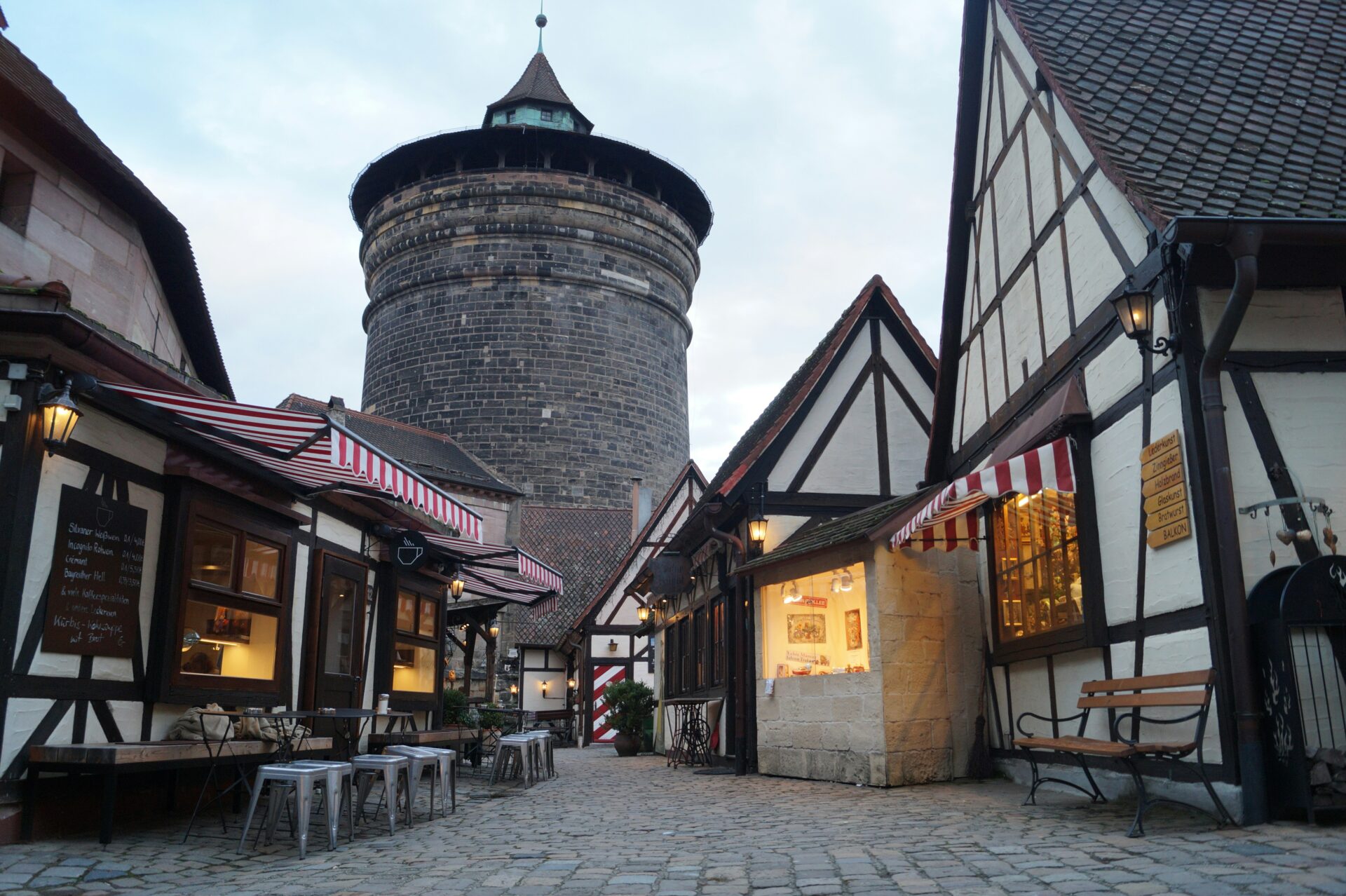
Bratwurst, Nürnberger Rostbratwurst & Local Cuisine
Nuremberg really is famous for its Nürnberger Rostbratwurst.
These little sausages, no bigger than a finger, taste best grilled over open beechwood fires.
I had to try them at Bratwursthäusle, one of the oldest bratwurst kitchens in town—the smell alone pulled me inside.
They serve them three or six at a time, either tucked in a crusty bun or on a pewter plate with sauerkraut and potato salad.
Every bite is juicy and just plain delicious.
But food in Nuremberg isn’t just about bratwurst.
Bakeries fill their windows with Franconian rolls and pretzels.
Restaurants serve roast pork with crispy crackling.
Quick Tips:
- Order bratwurst “mit Kraut” (with sauerkraut) for the classic way.
- Cozy taverns in old timbered houses are the best spots for a real Franconian meal.
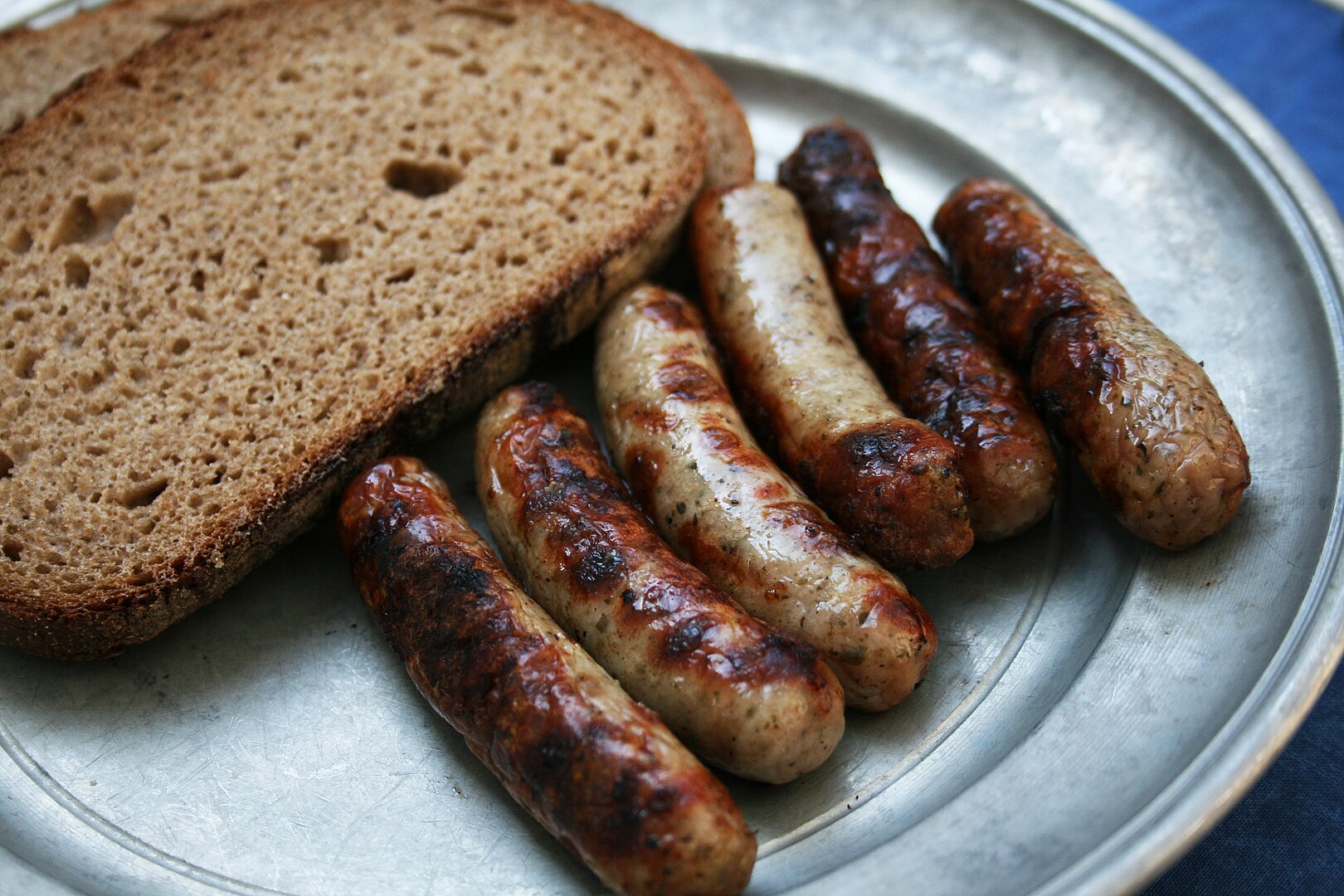
Kettensteg & Henkersteg: Iconic Bridges
The Pegnitz River winds through Nuremberg’s heart.
Its banks are dotted with landmarks, but Kettensteg and Henkersteg bridges really stand out.
Kettensteg, one of Europe’s oldest iron chain bridges, sways gently under your feet and feels almost weightless.
Walking across early in the morning, I watched the mist rise off the water, city walls reflected in the calm.
Henkersteg, or Hangman’s Bridge, comes with a darker story.
Executioners once lived at its end, separated from the rest of the town.
Now, both bridges connect the busy Old Town streets.
Their wooden walkways have become favorite photo spots.
They also give you some of the city’s best river views and a peaceful pause away from the crowds.

Heilig-Geist-Spital’s Waterside Calm
Along the Pegnitz, the Heilig-Geist-Spital rises over the water, its arches perfectly mirrored in the river below.
Founded in the 14th century as a hospital and home for the needy, it stands as a symbol of care and calm in the center of Nuremberg.
I stopped on the footbridge to admire its Gothic windows, pink stone, and peaceful reflection.
The area stays quiet except for the gentle sound of the river.
These days, the building houses a restaurant.
I sat with coffee, watching swans glide past.
Things to Do:
- Photograph the arches at sunset.
- Have a riverside meal in the historic setting.
- Just pause and enjoy the calm away from Old Town’s crowds.

Festive Traditions and Modern History
Nuremberg brings together the old and the new in surprising ways.
From lively markets and festive traditions to reminders of recent history, the city blends celebration, culture, and lessons from the past.
Hauptmarkt and Beautiful Fountain
Right in the heart of Old Town, Hauptmarkt buzzes with activity.
I loved watching locals shop at the daily market, surrounded by colorful stalls full of fresh produce, flowers, and crafts.
The Schöner Brunnen, or Beautiful Fountain, stands out here.
This 14th-century Gothic wonder, covered in ornate figures, quickly became one of my favorite landmarks.
Legend says spinning the golden ring on the fence brings good luck—I had to try it.
Here’s what made Hauptmarkt feel special to me:
- Location: Central meeting point for locals and visitors
- Highlights: Schöner Brunnen, daily market stalls, easy access to historic sites
The lively mix of commerce and history at Hauptmarkt set the scene for so many of my Nuremberg memories.

Nuremberg’s Christmas Market Magic
When December rolls around, the city transforms as the Christkindlesmarkt opens—one of Germany’s oldest and most famous Christmas markets.
The square fills with wooden stalls strung with lights.
The smell of spicy gingerbread (Lebkuchen) and grilled sausages pulls you in as you wander from booth to booth.
Local crafts amazed me—handmade ornaments, toys, and those quirky prune people (Zwetschgenmännle).
Kids line up to see the Christkind, the angel-like figure who opens the market every year with a prologue from the Church of Our Lady’s balcony.
Tips for visitors:
- Dress warmly; December nights get pretty chilly.
- Try Nürnberger sausages and mulled wine (Glühwein) for the real deal.
- Weekends get packed, so weekday mornings are much quieter.

Nazi Party Rally Grounds & WWII Sites
Nuremberg’s medieval charm is famous, but its 20th-century history left a deep mark too.
South of Old Town, I visited the huge Nazi Party Rally Grounds, where massive rallies once took place before World War II.
Walking through c, I could really feel the gravity of what happened there.
The Documentation Center, set in the Congress Hall, gave me a closer look at how the Nazi regime shaped both the city and Germany.
The exhibits don’t hold back—they use documents, photos, and audio-visual displays to show the rise and fall of the Nazis.
- Location tip: Take tram 9 or bus 36 for easy access.
- Must-see: The permanent exhibition “Fascination and Terror” for a powerful look at history.
This part of town offers a thoughtful, sometimes sobering, glimpse of history beyond the castle walls.
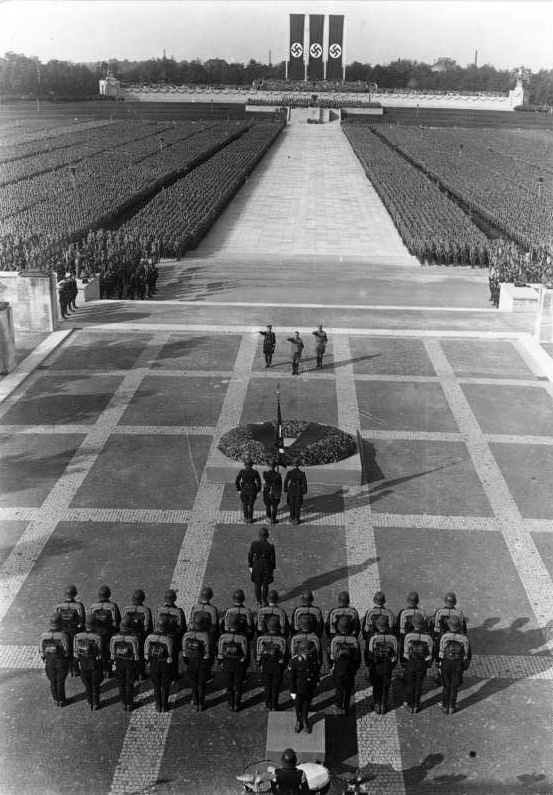
Nuremberg Trials and the Documentation Center
Nuremberg changed the course of modern justice at Courtroom 600 in the Palace of Justice. That’s where the Nuremberg Trials happened after World War II.
When I stepped inside, I felt the gravity of those moments. I could almost see top Nazi officials facing international prosecution for war crimes and crimes against humanity.
Today, the Memorium Nuremberg Trials museum tells these stories through personal accounts, timelines, and old recordings. You’ll find interactive displays that really bring the legal breakthroughs and their global impact to life.
- Plan ahead: Guided tours dive deeper, but they fill up fast.
- Documentation Center: If you want a bigger picture, the Documentation Center Nazi Party Rally Grounds ties together Nuremberg’s medieval roots with its place in world history.
Honestly, I left feeling like Nuremberg stands for more than just history and beauty. It’s a place where accountability and learning come together.

